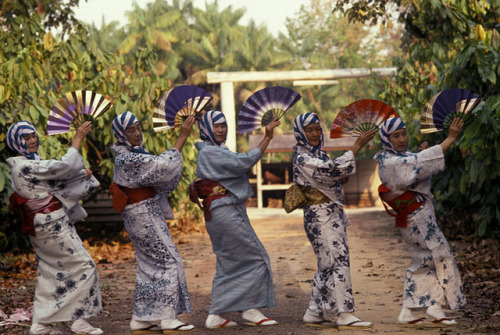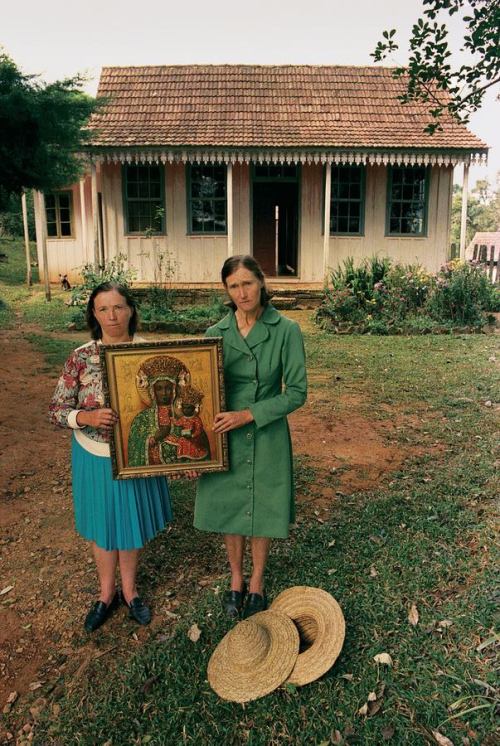#brazilians
Maysa
“Maysa is a project about race and gender in Brazil. I met Maysa during the final contest for “Young Miss Brazil”, in April 2014, she was there registering. On this day I discovered that this contest has two categories, one for black people and another for white people. Young Miss Brazil and Young Miss Brazil Black Beauty; created to encourage black girls to participate. Racism is, unfortunately, very common, although approximately 50% of Brazilians are African descendants. The vast majority live in a perpetually marginalized states. Months later, Maysa contacted me for a photo-shoot for her personal portfolio, she wanted to give a try to the 2015 contest. What was supposed to be a simple gift, became a work in progress. We started to get in touch, and month after month we developed a strong friendship. One that is helping me to be aware of the tough reality of my own country; racism, sexism, social exclusion, and a struggle to survive. In 2015 Maysa won the title Young Miss Brazil Black Beauty.
I’m seeing Maysa and her family, fighting to get to a comfortable place, and social recognition. And what is more exciting, I’m seeing the coming of age of a wonderful human being that represents a lot of values that my country is slowly losing.” - Luisa Dorr
Post link
Tomé Açu, Pará a Japanese colony in the Brazilian Amazon
“Tome-Acu is, fittingly perhaps, a hybrid of unlikely elements. On a given Sunday, worshippers may choose between the Catholic church, two Buddhist temples, and a host of evangelical churches. Japanese is still the lingua franca here, and even now negotiating Portuguese is a painful exercise for many residents. In restaurants, chopsticks, miso and tofu accompany black beans, manioc, and beef steak, the staples of Brazilian cuisine. Last June, while every Brazilian soul was glued to the television for the soccer World Cup, Tome-Acu was preoccupied with its annual baseball tournament, held at the harvest of the spice pepper crop. The centerpiece of town nightlife is the Karaoke, the Japanese sing-along, where patrons emboldened by whisky or sake belt out Sinatra ballads, Brazilian pop hits, and a wealth of Japanese torchsongs.
This town is the fruit of one of this century’s most remarkable diasporas, which scattered millions of Japanese across the globe in scant decades. Fleeing overcrowding and depression at first, and then the ruins of World War II, poor Japanese poured out of the cramped islands and set out for the empty frontiers of Asia and the New World. One wave of émigrés went to Korea, Taiwan and Manchuria. Several more hit Hawaii and the American mainland, until immigration authorities slammed the U.S. borders shut in 1924. Yet another washed up in South America, all the way to the Andean highlands and down to Brazil. Sao Paulo, with a million Japanese, now harbors the largest community outside the home country.
In September 1929, the steamer Montevideo Maru docked at Rio de Janeiro, jammed with Japanese immigrants. Most of the arrivals headed to Sao Paulo and Parana, but 43 families turned north, sailing all the way to Belem, where the Amazon river empties into the Atlantic. They went 130 miles inland, deep in the rainforest, and built farms, schools, homes and hospitals.
By all rights this community ought not exist. For more than a century, the eastern Amazon has been the target of ill-starred official colonization plans. The first was in 1875, not far from here, in the Zona Bragantina, where fifteen “colonies” were founded. The settlers were Italians and Germans, lured by land grants from Brazilian Emperor Dom Pedro II. But the distances from farms to the markets in Belem were considerable and the terrain severe. Worse, the Bragantina’s soils were acid when they were not sandy. By 1901, the 70,000 settlers dwindled to only 16,000. “Agricultural colonization by Brazilians in the Amazon left only melancholy memories,” writes historian Roberto Santos.
Recruited by a Tokyo colonization company, Nantaku, which beckoned colonists to a “second Paradise,” the Japanese found instead intractable jungle, distant markets, and endemic disease. But a core of immigrants stuck it out. They founded a pair of villages, Tome-Acu and Quatro Bocas, and began to negotiate a covenant with the new and strange land.”
Content:
http://aliciapatterson.org/stories/japanese-amazon-riddle-farming-tropics
Post link
Brazilian women of Polish ancestry hold an icon of the Black Madonna of Częstochowa; the patron saint of Poland, in the town of São José dos Pinhais where most locals are of descendants of Eastern European immigrants.
The icon of Our Lady of Częstochowa is also venerated in Haiti, and has been since the Haitian revolution as a result of cultural exchange between Haitian revolutionists and Polish soldiers, who aided the black Haitians in their uprising against the white colonists and slave-owners of Haiti. During this era Poland had been invaded and colonized by three of their neighbors, and in order to gain their freedom the Poles sought out the help of Napoleon. Napoleon had promised to help them, but in return he demanded for legions of Polish men who would travel to Sainte Dominigue (Haiti) and help suppress the rebellion that was actively taking place. When the Polish soldiers arrived in Haiti and saw the way that the enslaved Africans were being treated by the white colonists, many became disgusted and deserted their duties joining bands of black rebels in their fight. The main reason for this was due to the fact that fewer than a hundred years ago most Poles, like other people in Eastern Europe, lived in serfdom in conditions akin to slavery; in addition they too were desperate for their freedom back home and due to these factors they felt it was their duty to align with the black Haitians fighting for their own freedom. After the end of the revolution the leaders of the new black republic of Haiti granted citizenship to the Poles who decided to stay in the nation, as the Poles mixed into the Haitian population they also mixed in some of their cultural aspects including the veneration of Our Lady of Częstochowa.
Post link




























